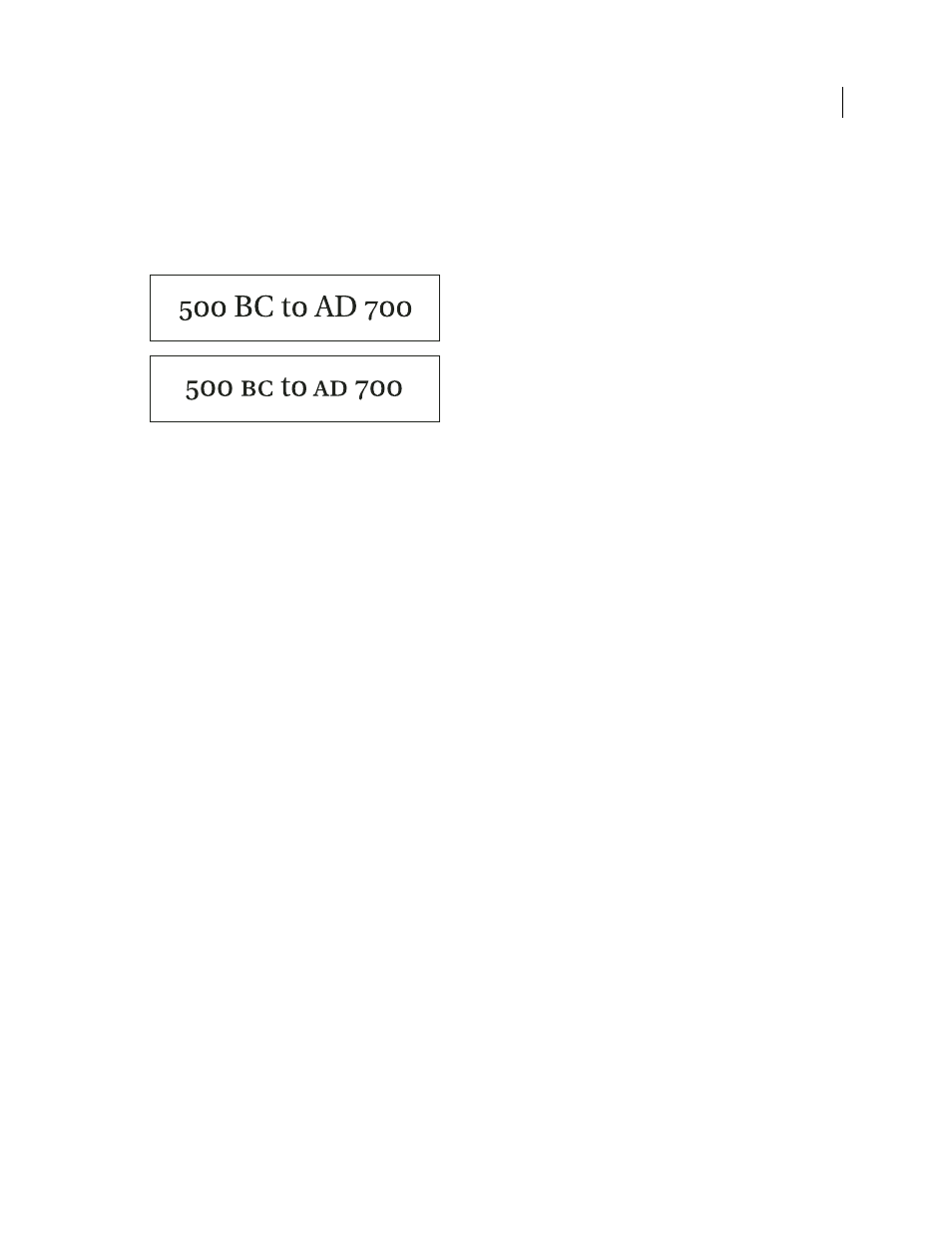Change text to all caps or small caps, Specify the size for small caps, Change capitalization – Adobe InDesign CS5 User Manual
Page 264: Scale type, Os) to scale the text within the frame. (see, Drag to resize the frame. (see

258
USING INDESIGN
Typography
Last updated 11/16/2011
Change text to All Caps or Small Caps
InDesign can automatically change the case of selected text. When you format text as small caps, InDesign
automatically uses the small-cap characters designed as part of the font, if available. Otherwise, InDesign synthesizes
the small caps using scaled-down versions of the regular capital letters. The size of synthesized small caps is set in the
Type Preferences dialog box.
Before (top) and after (bottom) setting BC and AD in small caps to complement old-style numerals and surrounding text
If you select All Caps or Small Caps in an OpenType font, InDesign creates more elegant type. If you’re using an
OpenType font, you can also choose All Small Caps from the Character panel menu or the Control panel. (See “
1 Select text.
2 Choose All Caps or Small Caps in the Character panel menu or in the Control panel. If the text was originally typed
in all caps, selecting Small Caps will not change the text.
Specify the size for small caps
1 Choose Edit > Preferences
> Advanced Type (Windows) or InDesign
> Preferences
> Advanced Type (Mac
OS).
2 For Small Caps, type a percentage of the original font size for text to be formatted as small caps. Then click OK.
Change capitalization
1 Select text.
2 Choose one of the following in the Type > Change Case submenu:
•
To change all characters to lowercase, choose Lowercase.
•
To capitalize the first letter of each word, choose Title Case.
•
To change all characters to uppercase, choose Uppercase.
•
To capitalize the first letter of each sentence, choose Sentence Case.
Note: The Sentence Case command assumes that the period (.), exclamation point (!), and question mark (?) characters
mark the ends of sentences. Applying Sentence Case may cause unexpected case changes when these characters are used
in other ways, as in abbreviations, file names, or Internet URLs. In addition, proper names may become lowercase when
they should be uppercase.
Scale type
You can specify the proportion between the height and width of the type, relative to the original width and height of
the characters. Unscaled characters have a value of 100%. Some type families include a true expanded font, which is
designed with a larger horizontal spread than the plain type style. Scaling distorts the type, so it is generally preferable
to use a font that is designed as condensed or expanded, if one is available.
